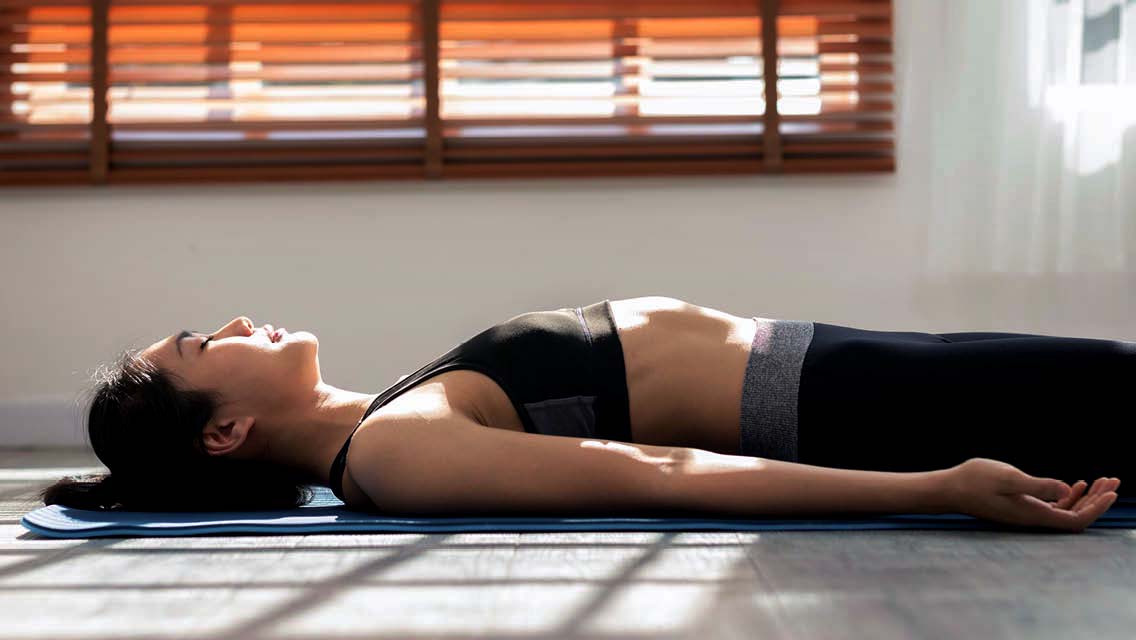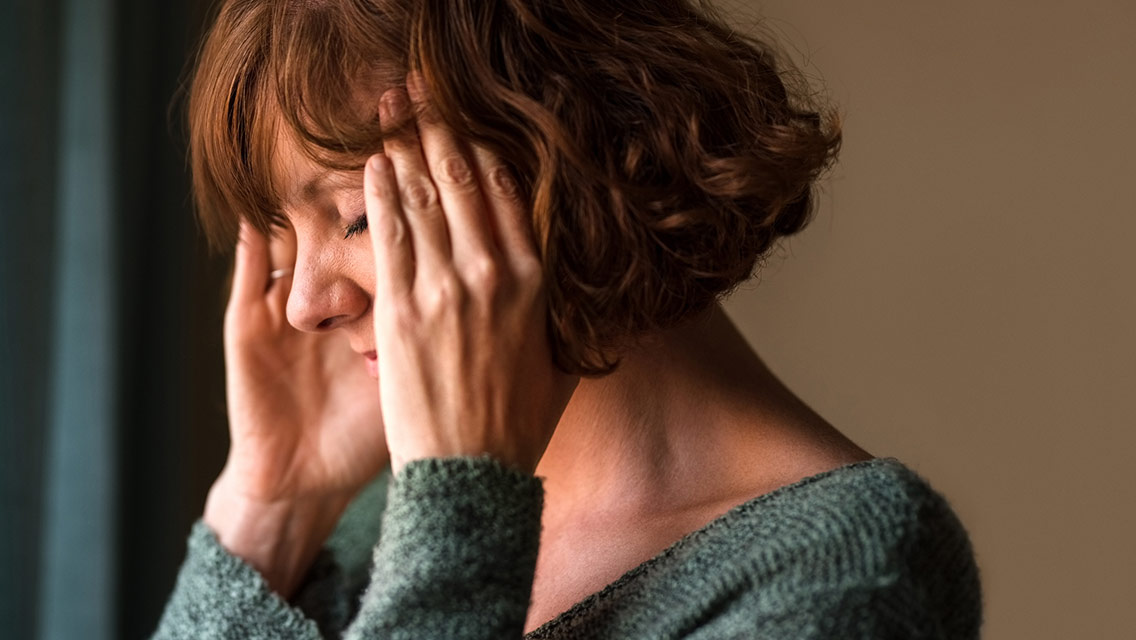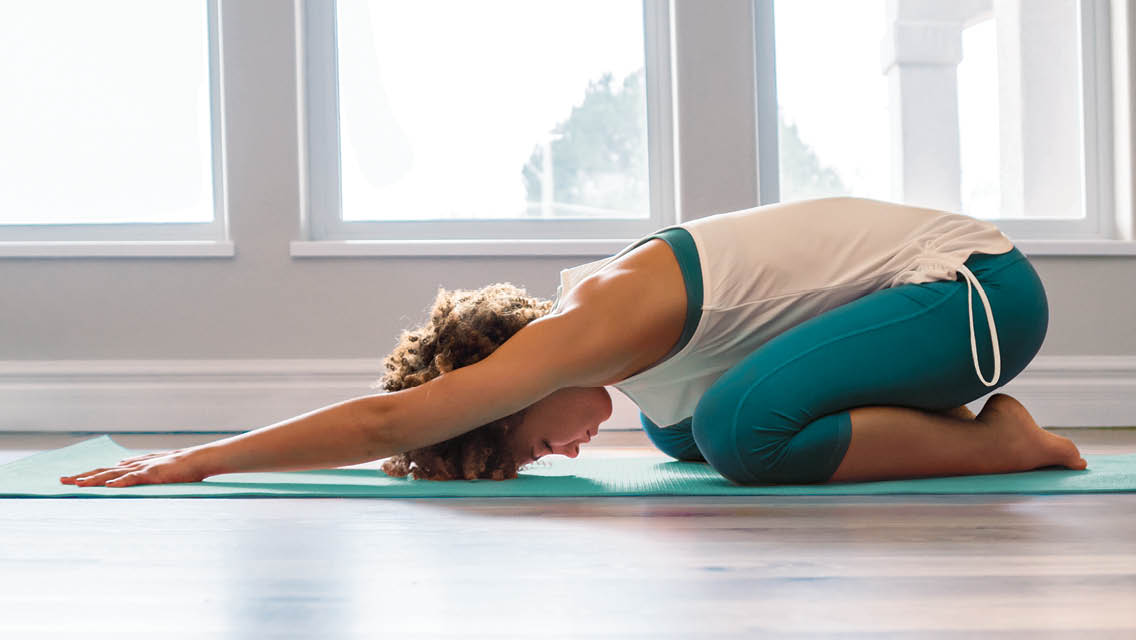Lie down and do nothing. For many people, savasana, or corpse pose, is one of the most challenging asanas in their practice. Not because it’s physically demanding, but because it’s precisely the opposite: Savasana is a call to rest.
Across many styles of yoga, savasana (also called mrtasana, or death pose) is considered the most important aspect of a practice. It promotes mindfulness, body awareness, and recovery. Whether done as the final resting pose in an asana practice or on its own, savasana can shift the body and mind into a restorative phase after a period of active work. It can help regulate the nervous system, reducing the impacts of stress, and ease the body into meditation or sleep.
But in a busy world where productivity rules and true rest is rare, savasana can seem a trifling way to spend five minutes. It looks simple (read: unproductive) and therefore easy to skip. Those who overcome this initial obstacle and assume the supine position may find it difficult to stay there. If it’s hard to calm the body, the mind, or both, savasana becomes uncomfortable on multiple levels.
There’s no quick fix to master savasana. In fact, like much in yoga, it’s not a pose that needs to be mastered at all. It’s an invitation to submit to gravity and breathe — and, in doing so, release tension in the body and in our thoughts. Some days, this might come easily; other days, there may be more resistance. The practice is to practice.
Focus on your breath and scan your body, allowing your thoughts to come and go and sensations to rise and fall. Avoid the urge to do anything, even when your thinking brain is telling you to get up and move.
Helpful Props:
- To help relax your eyes, place a soft cloth over them.
- To help relax your belly, place a block, pillow, or folded blanket across your abdomen.
- To help relax your neck, tuck a folded blanket or towel under your head and neck.
- To help relax your lower back, place a rolled-up blanket or bolster under your knees.
Instructions:
- Lie on your back with legs and arms angled away from your midline. Turn your palms up and let your feet relax.
- Close your eyes and relax your body into the floor, tuning in to your breath as you give in to gravity.
- Focus on relaxing and releasing tension in your body, starting at your toes; move up your body until you reach the top of your head.
- Rest here. If you have trouble relaxing your mind, focus on counting long, slow, deep breaths, from 20 to one.
- When you’re ready to come out of the pose, begin by wiggling your fingers and toes. Stretch as desired, then roll to one side. Slowly move to a seated position.
Cues:
- Eyes: To help relax your eyes, place a soft cloth over them.
- Face: Relax your jaw and soften your tongue in your mouth.
- Head: Avoid tilting or rolling your head to either side.
- Shoulders: Make sure your shoulders are down and away from your ears.
- Abdomen: To help relax your belly, place a block, pillow, or folded blanket across your abdomen.
- Head: To help relax your neck, tuck a folded blanket or towel under your head and neck.
- Lower back: To help relax your lower back, place a rolled-up blanket or bolster under your knee
Variations of Savasana
Savasana (Corpse Pose) With Knee Support
- Reduce tension in your lower back and hips by placing a bolster or rolled-up blanket under the backs of your knees.
Supta Baddha Konasana (Reclined Butterfly Pose)
- Instead of extending your legs in savasana, bring the soles of your feet together and allow your knees to fall out to the sides, making a diamond shape with your legs.
- Use blocks or other props to support your knees, as desired.





This Post Has One Comment
I have only begun doing yoga about one month ago. I am also simultaneously doing meditation and finding many ways to continue working on inner peace and healing of the body and mind due to being in a fight or flight state for many years. I had a pivotal moment of complete awareness of the power of the mind. Now I am clear and taking care of myself. The pain in my body that took years to build up will take time to heal. I am now aware I can do this myself. But to do this pose how can I get comfortable with pain stemming from my shoulders going down both arms to the fingertips? It is already improving but that is the area that has the most pain. I know my mind and continued mindfulness will heal all but any tips on working through the pain to practice self love will be helpful on my journey.